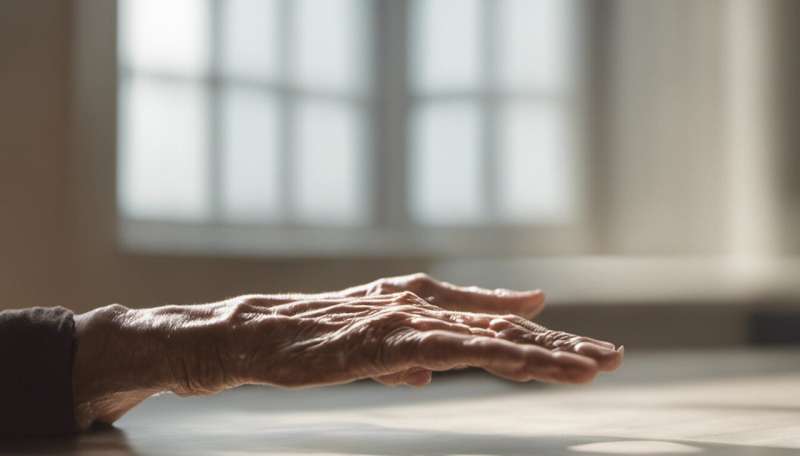Faster diagnosis of frailty in seniors aging at home is key to helping them stay independent

In the next 10 years, the number of Canadians living with frailty will grow to more than two million. Frailty matters because it not only affects seniors' ability to function, but also puts their health at risk.
Frailty is a state of reduced physical function for seniors living independently in the community. It looks different for different individuals and can affect endurance, balance, cognition or social engagement. Often frailty assessment is limited to in-office assessments by physicians. If it could be assessed in other settings, it may provide opportunities to respond to seniors' needs for services faster and with less burden on the health-care system.
As nurse practitioners, we led a quality improvement project to expand identification and response to frailty for seniors living in the community. The project also engaged social work staff and others working in seniors' services in Edmonton to assess older adults for frailty, performing these assessments at a seniors' centre in the community.
Our goal was to confirm that frailty screening could be effective without medical professionals' involvement, and to test a new method to identify and prevent functional decline.
Enabling frailty assessment
Unfortunately—or, looking back now, maybe serendipitously—the project began at the same time as the onset of the COVID-19 pandemic and the team had to pivot quickly to ensure continuation and success. The pandemic forced the team to think about frailty assessment in totally different ways and to develop an innovative approach to assess and respond to frailty virtually.
We needed to find a way to continue this important work despite limited face-to-face interactions.
Originally, the plan was to have primary care providers use a pre-existing tool, the Clinical Frailty Scale (CFS) developed at Dalhousie University, to assess frailty during in-person appointments at a community-based seniors' organization in downtown Edmonton. Since in-person visits were limited, our team identified an alternative approach that involved interviewing seniors by telephone and having them provide a self-assessment of their frailty level.
Permission was obtained from Dalhousie to adapt the Clinical Frailty Scale to a Virtual Frailty Screening tool. Seniors responded well to the process and, after a few tweaks, we pivoted to a new and improved virtual version of Building Resilience and Responding to Seniors Frailty, known as DRAGONFLY.
Providing support in the community
Virtual Frailty Screening scores ranged from zero to nine and were divided into three categories: mild frailty (scores of one to three), moderate frailty (four to six) and severe frailty (seven to nine). Interestingly, it was the moderately frail seniors who required the most support. Those who were experiencing mild frailty didn't require active intervention and those experiencing severe frailty were well supported. It was those seniors in the moderate category who required intensive intervention.
The DRAGONFLY team's response focused on providing both social and clinical supports for care in community. The most common social supports included financial assistance, housing support, transportation, home services, legal referrals and completion of medical paperwork. More specifically, assisting seniors with paperwork to access funds or adequate housing.
Other seniors required more practical resources, such as a connection to a driving service for medical appointments or assistance with grocery delivery during the pandemic.
Social connections were very important. Seniors were referred to recreation programming to enhance engagement with peers, connections with other seniors from specific newcomer communities, caregiver support, psychosocial support groups and virtual communities. Well-being supports included use of multicultural navigators to help newcomers acclimatize to their new homes, LGBTQ2S connections, medical translation and counselling for those who struggle with hoarding behaviours.
The most common clinical supports included connecting to a new primary care provider, help finding allied health providers such as physiotherapists or pharmacists, primary care network program registration, facilitating pharmacy reviews, connecting with drop-in mental health counselling and health navigation.
Putting these in place and following up with seniors via phone on a regular basis demonstrated improvement in their resilience. We saw a significant decrease in their support needs and gaps over a 12-month period.
Frailty in the community
Assessing and responding to frailty in the community has never been so important. The pandemic highlighted the inherent risks of congregate living and the importance of maintaining older adults living in their communities as long as possible. Independent living contributes to greater health for seniors and also helps to keep health-care costs lower.
We already know that seniors who are socially engaged are not only happier, but healthier. Thinking about and implementing new ways of identifying frailty and including social services as a major sector in this work represents a new way to integrate our health and social spheres, rooting wellness in our communities, not in our clinics.
Our program made an important difference to over 100 seniors during a very challenging time for them. In the face of social distancing and limited face-to-face services, DRAGONFLY continued to assess frailty in seniors in the community and allowed us to respond to functional needs in a meaningful way.
This project is coming to an end, but we are currently working with other organizations that serve seniors and hope to apply the lessons of DRAGONFLY to build capacity to assess and respond to frailty, preventing its progression.
This article is republished from The Conversation under a Creative Commons license. Read the original article.![]()




















